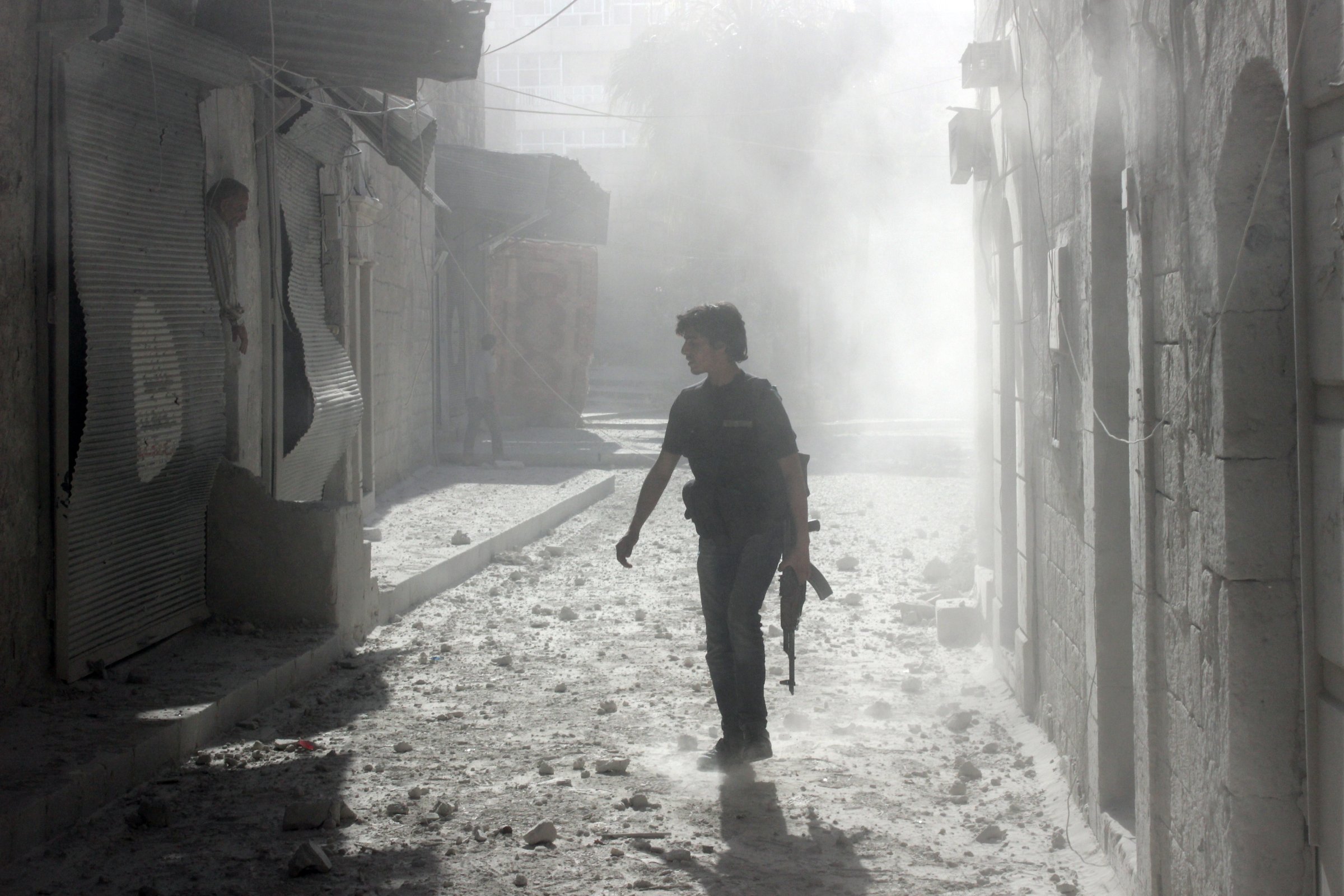
The civil war in Syria already appears to have drawn more foreign fighters than the Soviet occupation of Afghanistan in the 1980s, and may prove an even more dangerous incubator for terrorism in the long run, according to a new report by a private security company.
The report, by the Soufan Group, estimates that 12,000 foreign fighters have traveled to Syria. The estimate is up sharply from 7,000 that U.S. and Israeli intelligence estimated at the start of 2014, and more than the 10,000 thought to have fought the Soviets in Afghanistan, the decadelong conflict that spawned al-Qaeda.
The greatest concern about terrorism resides in the perhaps 3,000 fighters the report says traveled to Syria from Western countries to fight with rebel groups dominated by Islamic extremists. Though arrayed against the government of Syrian President Bashar Assad and his Iranian allies, the fundamentalists might in time choose to direct violence against Western targets, “the far enemy” in the parlance of al-Qaeda — and recruit those battle-hardened foreign fighters to return to their home countries and carry out attacks.
“Leaving aside what may happen in Syria, if al-Qaeda can maintain a network of even a small number of motivated returnees, or recruit fighters to its terrorist agenda while they are still in Syria, it may once more pose a significant global threat,” the report says.
Most of the foreign fighters in Syria arrived from Arab countries, with 3,000 alone from Tunisia and another 2,500 from Saudi Arabia. But 700 fighters are thought to have traveled to Syria from France; 400 from the U.K.; and around 250 each from Belgium, Australia and Germany, the report says, quoting estimates by the nations ’ own governments.
The study says about 70 fighters from the U.S. have traveled to Syria, quoting an FBI statement from May. Last Friday, the conflict recorded its first known American suicide bomber, when Moner Mohammad Abusalha, a recent resident of Florida, detonated the truck he was driving in an attack for al-Nusra Front, an extremist Sunni force.
Study author Richard Barrett, a former British intelligence official and U.N. specialist on al-Qaeda, writes that that leaders of groups that attract most foreign fighters — al-Nusra Front, Ahrar al-Sham and the Islamic State of Iraq and Greater Syria (ISIS) — were previously members of al-Qaeda. He adds that the process of indoctrination in extremist thought may well be accelerated by social media, as young would-be fighters reinforce their views in self-limiting Twitter, Facebook and other feeds. In any event, most already are familiar with the extremist ideology that recruits learned from Osama bin Laden and his acolytes.
“The progression from foreign fighter to terrorist is not a linear one, nor is it inevitable, and the majority of people who return from the fighting in Syria may pose no terrorist threat,” Barrett writes. “But the difficulty remains how to distinguish those who will from those who won’t.”
The only known attack outside Syria by a foreign fighter occurred in Belgium in May, where a French citizen who had fought for a year in Syria with ISIS killed three people at a Jewish museum on May 24. But if the experience after the Soviet war in Afghanistan is any example, the report says, “the Syrian war is likely to be an incubator for a new generation of terrorists.”
More Must-Reads From TIME
- The 100 Most Influential People of 2024
- The Revolution of Yulia Navalnaya
- 6 Compliments That Land Every Time
- What's the Deal With the Bitcoin Halving?
- If You're Dating Right Now , You're Brave: Column
- The AI That Could Heal a Divided Internet
- Fallout Is a Brilliant Model for the Future of Video Game Adaptations
- Want Weekly Recs on What to Watch, Read, and More? Sign Up for Worth Your Time
Contact us at letters@time.com